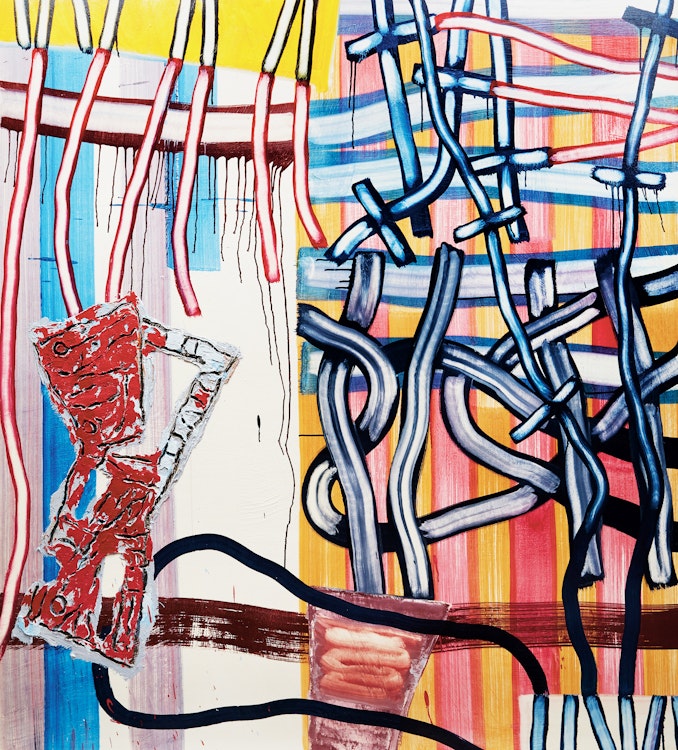The Red Canvas (Destroyed Version) by David Urban

David Urban
The Red Canvas (Destroyed Version)
oil on canvas over board
signed, titled and dated 1995 on the reverse; unframed
60 x 54 ins ( 152.4 x 137.2 cms )
Auction Estimate: $14,000.00 - $18,000.00
Price Realized $16,800.00
Sale date: June 15th 2022
Provenance:
Sable-Castelli Gallery, Toronto
The Collection of Jared Sable, Toronto
By descent to the present Private Collection, Toronto
Sable-Castelli Gallery, Toronto
The Collection of Jared Sable, Toronto
By descent to the present Private Collection, Toronto
Literature:
John Bentley Mays, ‘David Urban: Night and Day, Seven Paintings that changed my life’, “Canadian Art”, Winter 1995, pages 66, 69 and 81, reproduced page 67
John Bentley Mays, ‘David Urban: Night and Day, Seven Paintings that changed my life’, “Canadian Art”, Winter 1995, pages 66, 69 and 81, reproduced page 67
In 1995 a unique project was undertaken by artist David Urban and the critic John Bentley Mays, in which Mays and his family would live with a series of abstract works: “The cycle of abstract canvases David created for the occasion is called Bordertown, and consists of seven works dedicated to the memory of the American jazz saxophonist and composer Julius Hemphill, who died in New York last spring, while the paintings were being made.” Mays continues describing the works: “Most of the paintings are big, hectic oblongs criss-crossed by linear imagery that at times could be wildly abstracted grey or yellow expressway interchanges floating in shallow pictorial space, or melting sewage conduits, or soft heaps of bowel. If a picture is not going right, Urban tends to bandage the botch with thick, rumpled patches of paint, then whack, scrape and dot the dressing. Despite this heavy invention and re-invention in the series’ four largest works, and in the somewhat smaller one, Urban rarely crowds or clutters even a corner of the canvas. Our minds are allowed free passage along the underpasses and down the laneways of big-city contemporary experience.”
“The Red Canvas (Destroyed Version)” was a part of this critic and artist experiment that lasted for a period of four months. Adding to the experience, Urban lent Bentley Mays recordings of Julius Hemphill to listen to as he contemplated and jotted down his thoughts in a dairy about the works that surrounded him. Bentley Mays discusses the paintings and the recordings he listened to, sharing, “I began to work with them, letting them be heard - hearing the freedom and pathos David heard when he painted them, writing his lament for Hemphill (as well as his own determination to resist the world that ignored Hemphill) in the stressed line and impure colour, the break, rhyme, and complex rhythm of his paintings.”
“The Red Canvas (Destroyed Version)” was a part of this critic and artist experiment that lasted for a period of four months. Adding to the experience, Urban lent Bentley Mays recordings of Julius Hemphill to listen to as he contemplated and jotted down his thoughts in a dairy about the works that surrounded him. Bentley Mays discusses the paintings and the recordings he listened to, sharing, “I began to work with them, letting them be heard - hearing the freedom and pathos David heard when he painted them, writing his lament for Hemphill (as well as his own determination to resist the world that ignored Hemphill) in the stressed line and impure colour, the break, rhyme, and complex rhythm of his paintings.”
Share this item with your friends

